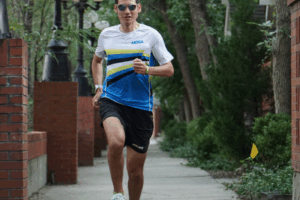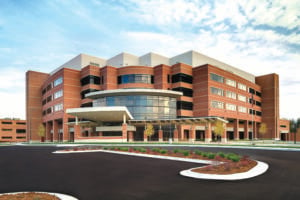Where does DVT occur?
Dena’s story:
When I was 23 years old, I started having severe pains in my stomach—so bad that I couldn’t sit up straight. After waiting a few days, and with the pain not subsiding, I visited my family physician and he, unknowingly, gave me something for stomach bloating. Needless to say, that didn’t work, and after a couple of days, I went back to him again. He could not find out what was causing my pain, so he sent me directly to a surgeon who specialized in laparoscopic procedures. The surgeon thought that maybe the problem was my appendix, so he decided to go ahead and do an exploratory laparotomy. He removed my appendix, which was normal; tested my lymph nodes for cancer, which were normal; performed tests for sexually transmitted diseases, which were normal; and so on.
When I continued to get worse (my weight went from 119 pounds to 156 pounds in a matter of days), my mother was adamant that I be moved to another hospital. I was transported immediately to another hospital, and a specialist was called in. After seeing the pain I was in and realizing the urgency of the situation, he per formed emergency surgery. He found a huge section of my small intestine was dead and removed almost 3 feet of it. He said he was almost positive that a blood clot in my intestines had started this whole ordeal. He asked me if I had taken karate, been kicked in the stomach, or had any trauma to that area, which I hadn’t.
The first 48 hours after surgery were critical. The doctors were unsure if I would make it. If I did, they said I might have to wear a colostomy bag. I was very lucky, and all of my organs regained their proper function. After surgery and during my three-week stay in the hospital, I learned that a blood clot had formed in my superior mesenteric vein (a vein in the intestines) and small clots had formed in both common femoral veins (the veins in my groin).
Jennifer’s story:
My story started when I was 27 years old and was pregnant. I was nearing my due date when my doctor discovered that my blood pressure was higher than it had been all throughout my pregnancy. My blood pressure had been normal up until this point. It continued to be high, so the doctor sent me to the hospital to do a nonstress test, but everything appeared normal. Once I passed my due date, the doctor recommended that I be induced. I went in early in the morning on a Thursday. My husband and I were very excited. I gave birth later that night to our beautiful and healthy daughter. There were no problems with the delivery, and we both went home three days later.
Monday afternoon, I started having a headache on the back top part of my head. Before I knew it, it was a pounding and I was in a lot of pain. I called my family physician and described the throbbing headache I was having. She told me to go to the emergency room. My husband took me, and when I talked to the doctor there, he said that I might be experiencing an after-effect headache from the epidural that I had received during my labor. Because the records didn’t indicate there had been any problems when the epidural was administered, he wasn’t sure. He also thought the headache could be due to preeclampsia. The doctor prescribed Tylenol with codeine and advised me to come back in a few days if things didn’t get better.
The headaches continued, but the medicine helped to mask them a little bit over the next few days. When I woke up on Friday morning, I was feeling better than I had all week. Because my mother was taking care of our daughter and I was anxious to get back into my regular routine, I went downstairs and started to wash dishes. As I was doing so, my left arm started to go numb. The next thing I knew, it was shaking uncontrollably. This really made me nervous. Thank goodness my mother was there to calm me down and call my family physician. My doctor thought I was having a seizure and sent me to a neurologist, who I saw later that day.
The arm shaking happened again while I was having my appointment with the neurologist. He told me I was having a seizure and wanted to know if I had a history of having seizures or other medical problems. I told him I had never had any seizures or serious medical problems. The neurologist told me he wanted me to have an MRI that evening to rule out a blood clot, a brain tumor, or an aneurysm. I was very nervous and was so glad my husband was with me because I didn’t understand why all this was happening. I went to an office downstairs from the neurologist’s office to have the MRI done. Once we went back up to his office, he told me nothing showed up on the MRI. Because of the arm seizures, he prescribed an antiseizure medication. He said it could take a few days to take full effect, so I should take it easy.
The next day my husband brought me some lunch as I was resting. All of a sudden, my head turned right around uncontrollably and I went into a full body seizure. I don’t remember having the seizure, but afterward I remember my husband on the phone with 911, asking them to send an ambulance. I was so scared. I had never, ever experienced anything like this before.
Shortly after I was taken to the emergency room, I was admitted to the hospital and the neurologist became my main doctor. During my stay, I went through a series of tests to determine a diagnosis. The tests included an angiogram, an electroencephalogram (EEG), a spinal tap, an echocardiogram (a heart ultrasound), and a CT scan. Although the spinal tap showed some “old” blood was in the spine and brain, and the EEG showed some abnormalities, most of the tests came back normal. My doctor didn’t know what the problem was, but he thought it could be epilepsy or preeclampsia. The doctor did not discover the clot during all of this testing, but I continued to have symptoms. My headaches occurred daily, and I even lost motor skills on the left side of my body. I experienced numbness in my arms and legs on my left side, and I had tingling above my lips. I did have a couple of seizures during my stay, but the seizures subsided as I continued to take the medication. After about two weeks, the doctor let me go home, even though I continued to have headaches and was not feeling well. There was still no diagnosis.
For the next three days, I lay listless in my bed with constant pain in my head and no appetite. No over-the-counter medicine helped. My husband called the doctor each day. Because my condition was getting worse, on the third day, the doctor ordered another MRI. This time, a dye was injected into a vein that helps “light up” the veins in the brain. That is when they discovered that I had a blood clot in a vein in my brain.




